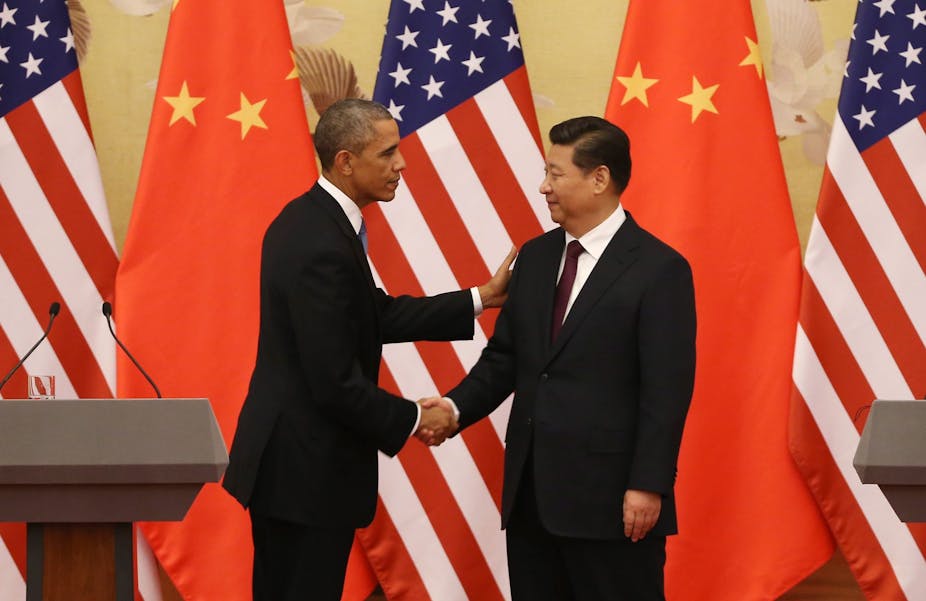A groundbreaking climate deal between the US and China will put pressure on the international community to broker a global treaty at next year’s United Nations talks, but experts say it still might not be enough to keep warming below 2C.
The agreement, reached after two days of talks in Beijing between US President Barack Obama and his Chinese counterpart Xi Jinping, will see the United States commit to reducing greenhouse gas emissions by 26-28% below 2005 levels by 2025.
China will aim to stop its emissions growth by 2030, while increasing the share of non-fossil fuel energy to 20%.
It is the first time that China, the world’s biggest emitter, has promised to stop growing its emissions.
The deal also represents a doubling in the rate at which the United States will cut its emissions, relative to its previous pledge.
Peter Christoff, Associate Professor at University of Melbourne, said the deal could be a game-changer and would increase the prospects of an international climate deal being reached at the UN Paris climate summit in December 2015.
Australia’s environment minister Greg Hunt responded to the deal by saying that Australia was already delivering on its emissions-reduction target of 5% below 2000 levels by 2020.
He said the Government would consider higher targets taking into account action by major trading partners.
Pep Canadell, Executive Director of the Global Carbon Project at CSIRO, said despite the unprecedented commitments the targets may not be enough to keep warming below 2C.
“China and the US were responsible in 2013 for 42% of the global emissions of carbon dioxide, the single most important greenhouse gas, and China alone was responsible for over half of the global growth in emissions,” he said.
Globally, emissions need to peak closer to 2020 to keep warming below the safe threshold, and cut emissions by 3% each year for several decades after, Dr Canadell said. China would also need to peak emissions before 2030.
US emissions have remained roughly steady since 2008, despite a record increase in emissions in 2013.
Dr Canadell said that compared to the EU targets to reduce emissions by 40% below 1990 levels by 2030, the US targets were modest, and may prove too little to keep warming below 2C.
The deal follows President Obama’s Climate Action Plan, including a commitment to reducing emissions from power by 30% below 2000 levels by 2020.
Apart from targets, the US-China deal includes continuing cooperation on research and development, clean energy projects, a major carbon capture and storage project in China, a commitment to phasing down hydroflurocarbons, and climate/carbon smart cities.
Peter Sheehan, research director at the Centre for Strategic Economic Studies, Victoria University, said China would need to start reducing emissions before 2030 but signs were good that China could do considerably better thanks to its efforts to curb air pollution.
“Renewables are rising very rapidly and costs are falling. Coal use is probably lower in the first nine months of this year than last year… Quite dramatic changes are happening on the ground.”

